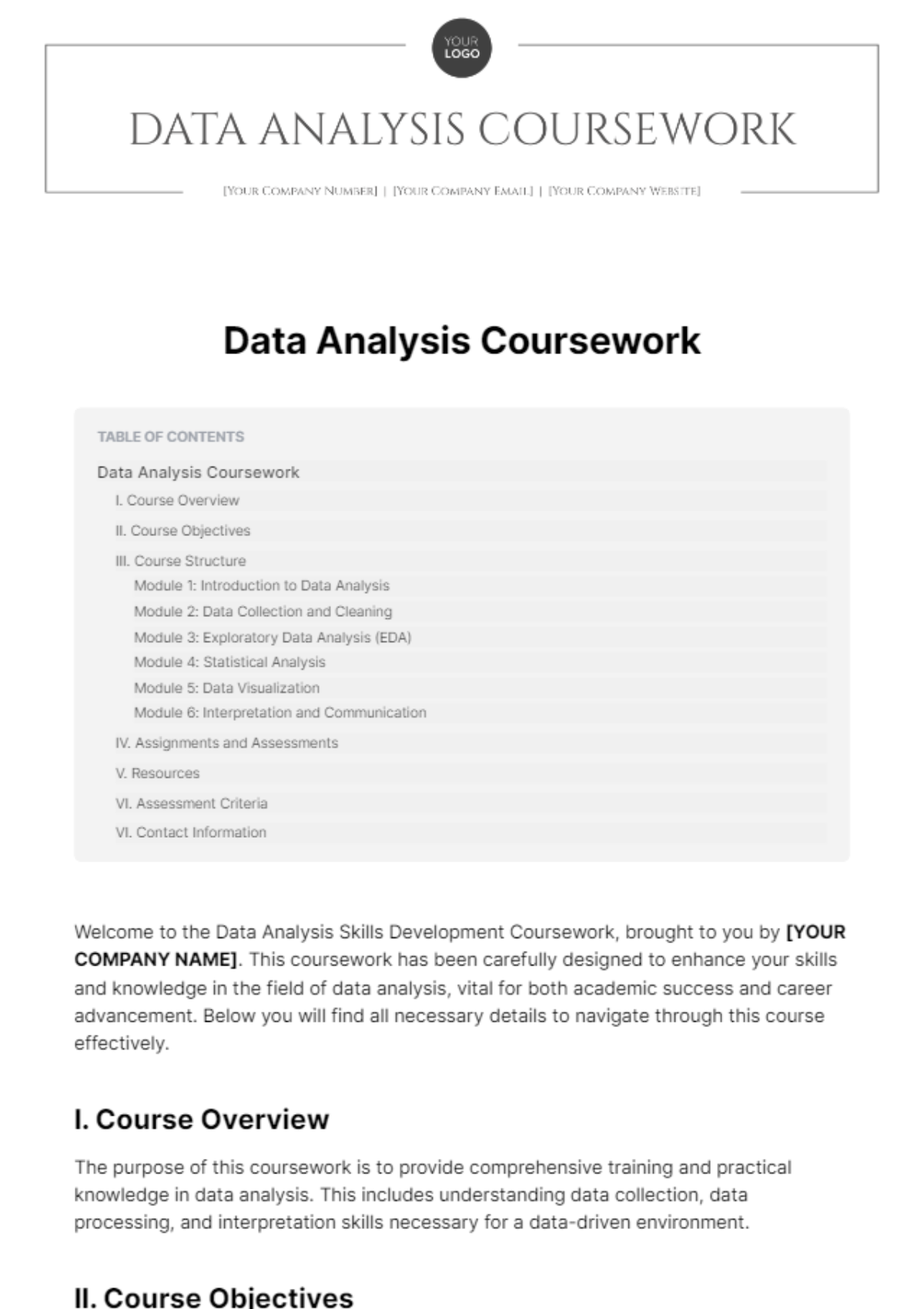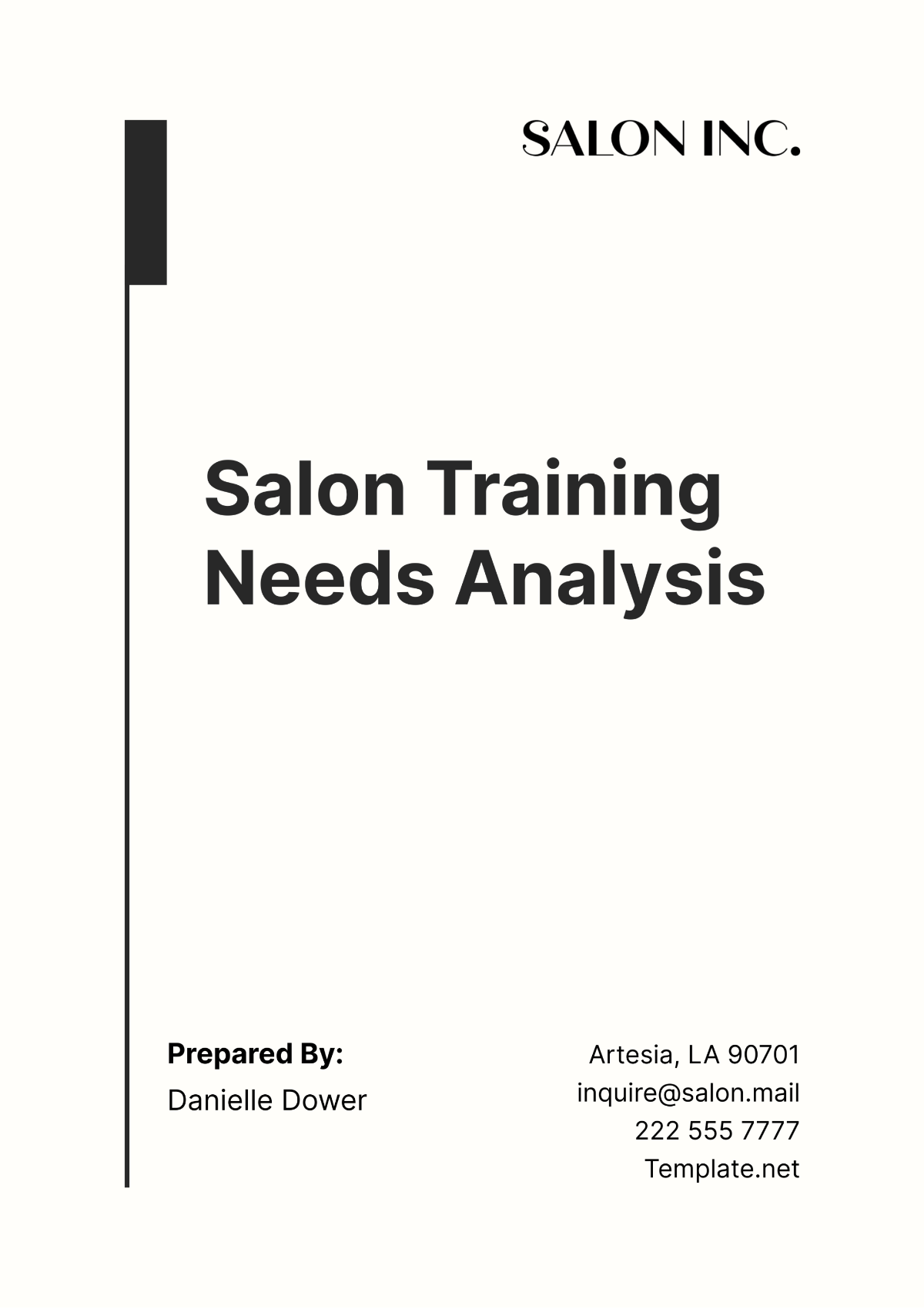Training Needs Analysis Report
Prepared By | Company | Date Prepared |
|---|---|---|
[Your Name] | [Your Company Name] | [Current Date] |
I. Executive Summary
The [TRAINING NEEDS ANALYSIS REPORT], conducted by [YOUR COMPANY NAME], aims to identify the current training requirements within the organization to enhance employee skills and performance. This report provides a comprehensive overview of the findings and recommendations for addressing identified training needs.
The analysis involved [YOUR DEPARTMENT], which encompassed interviews with key stakeholders, surveys, and an examination of performance metrics. The report highlights key areas where training interventions are required to align with organizational goals and improve overall effectiveness.
II. Introduction
In this section, we introduce the purpose and scope of the [TRAINING NEEDS ANALYSIS]. We outline the methodology used to gather data, including [SURVEY METHODS], [INTERVIEW PROTOCOLS], and [DATA SOURCES]. The introduction provides context for the subsequent analysis and recommendations.
III. Organizational Overview
[YOUR COMPANY NAME], a leader in [INDUSTRY OR SECTOR], operates with a commitment to excellence and continuous improvement. This section provides background information on the organization's mission, vision, and strategic objectives. Additionally, it outlines the current structure and workforce demographics to contextualize the training needs identified.
Mission: [MISSION STATEMENT]
Vision: [VISION STATEMENT]
Strategic Objectives:
[OBJECTIVE 1]
[OBJECTIVE 2]
[OBJECTIVE 3]
IV. Methodology
The methodology section describes the approach used to conduct the [TRAINING NEEDS ANALYSIS]. It includes details on data collection methods, participant selection criteria, and analysis techniques employed. This section ensures transparency and reproducibility in the research process.
A. Data Collection Methods
[SURVEY]: A survey was distributed to [NUMBER] employees across various departments to gather insights into their perceived training needs.
[INTERVIEWS]: Semi-structured interviews were conducted with [NUMBER] key stakeholders, including department heads and team leaders, to obtain qualitative feedback on training requirements.
[PERFORMANCE METRICS ANALYSIS]: Performance metrics such as [KPIS] and [EMPLOYEE EVALUATIONS] were analyzed to identify skill gaps and performance trends.
B. Participant Selection
Participants for the survey and interviews were selected based on their role within the organization, ensuring representation from different departments and levels of seniority.
C. Analysis Techniques
Data collected from surveys and interviews were analyzed using [QUALITATIVE AND QUANTITATIVE] methods to identify common themes and trends in training needs.
V. Findings
This section presents the key findings of the [TRAINING NEEDS ANALYSIS], categorized by department or functional area. Findings are based on the analysis of survey responses, interview transcripts, and performance data.
A. Departmental Training Needs
1. [DEPARTMENT 1]
[SKILL GAP 1]: Employees in [DEPARTMENT 1] lack proficiency in [SPECIFIC SKILL OR KNOWLEDGE AREA], impacting productivity.
[TRAINING RECOMMENDATION]: Implement targeted training programs on [TOPIC] to address the identified skill gap.
2. [DEPARTMENT 2]
[SKILL GAP 2]: [DEPARTMENT 2] requires training in [SPECIFIC TECHNOLOGY OR PROCESS] to streamline operations and improve efficiency.
[TRAINING RECOMMENDATION]: Develop a customized training module on [TOPIC] tailored to the needs of [DEPARTMENT 2] employees.
B. Cross-Functional Training Needs
1. [LEADERSHIP DEVELOPMENT]
[LEADERSHIP COMPETENCY GAP]: Emerging leaders lack essential [LEADERSHIP COMPETENCIES] needed to drive organizational success.
[TRAINING RECOMMENDATION]: Launch a leadership development program focused on enhancing [LEADERSHIP SKILLS] and fostering a culture of innovation.
2. [DIGITAL SKILLS ENHANCEMENT]
[DIGITAL SKILLS GAP]: With the increasing digitization of processes, employees require training in [DIGITAL TOOLS OR PLATFORMS] to remain competitive.
[TRAINING RECOMMENDATION]: Provide comprehensive training sessions on [DIGITAL SKILLS] to equip employees with the necessary tools for success in a digital age.
VI. Recommendations
Based on the findings outlined in the previous section, this section provides actionable recommendations for addressing the identified training needs. Recommendations are tailored to specific departments or functional areas and prioritize areas of critical need.
A. Department-Specific Recommendations
1. [DEPARTMENT 1]
[RECOMMENDATION 1]: Develop a series of [WORKSHOPS OR SEMINARS] to upskill employees in [SPECIFIC AREA].
[RECOMMENDATION 2]: Provide access to [ONLINE LEARNING PLATFORMS] for self-paced learning on relevant topics.
2. [DEPARTMENT 2]
[RECOMMENDATION 1]: Partner with external training providers to deliver specialized training on [TECHNOLOGY OR PROCESS].
[RECOMMENDATION 2]: Establish a mentorship program to facilitate knowledge transfer and skill development within the department.
B. Organization-Wide Recommendations
1. [LEADERSHIP DEVELOPMENT]
[RECOMMENDATION 1]: Launch a mentorship program pairing emerging leaders with senior executives to foster leadership growth.
[RECOMMENDATION 2]: Incorporate leadership training modules into onboarding programs for new hires to instill a culture of leadership from day one.
2. [DIGITAL SKILLS ENHANCEMENT]
[RECOMMENDATION 1]: Create a centralized repository of [DIGITAL RESOURCES] accessible to all employees for continuous learning and development.
[RECOMMENDATION 2]: Offer incentives such as certifications or recognition for employees who demonstrate proficiency in key digital skills.
VII. Conclusion
In conclusion, the [TRAINING NEEDS ANALYSIS REPORT] provides valuable insights into the current training requirements within [YOUR COMPANY NAME]. By addressing the identified skill gaps and investing in employee development initiatives, the organization can enhance its competitive advantage and achieve its strategic objectives. The recommendations outlined in this report serve as a roadmap for future training and development efforts, ensuring the continued growth and success of the organization.
















